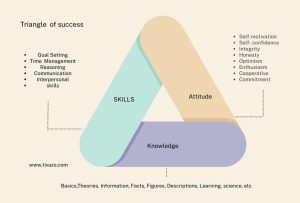The way we arrange and conceptualize work has undergone significant revisions in recent years, thanks to modern developments. As employees and technology continue to evolve, business leaders must now understand various types of work arrangements to ensure their companies succeed. The hybrid work arrangement is seen as a highly suitable and sustainable choice among other flexible work methods available today.
A work arrangement covers the guidelines for when, where, and how employees do their jobs. The term includes how and where work happens, methods of communication used, and what is expected regarding performance. Today, work arrangements include much more than just the regular nine-to-five office, with options now being remote work, flexible hours, job sharing, and many hybrid arrangements.
With hybrid work, staff have a chance to divide their working hours between being at home and going to the office. This way of organizing work is becoming popular with organizations that want to maintain efficiency and keep their team members happy and retained.
While reading this guide, we will review the details of hybrid work arrangements, studying how they bring gains for both employers and employees, and cover the usual problems and most effective ways to overcome them.
Looking at the Evolution of Modern Employment
| Over the last decade, technological development and increasing workforce preferences have driven major changes in work arrangements. Ordinarily, workers went to the office daily during hours set by management and could not work flexibly. |
| Still, the work environment now supports multiple flexible options to support both employees and company goals. Employees might also benefit from remote work, where the entire job is done outside of the traditional office or flexible work, where they may arrive at different times; compressed work, where longer days of work are scheduled with fewer workdays; and finally, hybrid work which blends time at the workplace and work from home. |
| The pandemic prompted the use of remote and flexible approaches, meaning organizations had to move fast to introduce them. Today’s situation shows businesses that virtually all jobs could be done effectively outside the traditional office, creating lasting changes in the way many firms organize staffing policies. |
| Typically, today’s employees prefer working arrangements that let them have a flexible schedule, a balanced life, and offer autonomy. Those organizations that do not update their approaches to work might see their best workers choose more flexible competition. The shift means that setting up good work models is now a crucial thing for businesses, not just a simple employee perk. |
What does Hybrid Work Arrangement mean? (Hybrid Work Arrangement Meaning)
Instead of everyone working at the office each day, employees on a hybrid plan may choose to divide their time between home and the office. This kind of setup means workers can decide on their work environment depending on what they’re doing, their preferences, and what the business
Most hybrid plans have workers in the office some days and at home for the others. How much time is allotted to work varies a lot because of each organization’s needs and how jobs are done. Companies choose various hybrid work schedules: some do three days in the office and two remote, others prefer the opposite, or more flexible plans, depending on the work at hand.
Unlike some other flex models, hybrid work brings both remote and in-office experiences together on purpose. Unlike those who never visit an office or those who do every weekday, hybrid teams blend the advantages and avoid the disadvantages of both workstyles.

A hybrid work arrangement may follow a variety of structural schemes. A few organizations have a set hybrid schedule where all staff share specific office days every week. Certain groups of employees are comfortable with different types of hybrid schedules, choosing when they come to the office based on meetings, work tasks, or personal schedules. Team-based hybrid work plans are created to bring specific teams together at the same time so they can collaborate.
For companies wishing to offer hybrid work, effective technology and digital infrastructure are essential to enable everyone to communicate and cooperate freely in different workplaces. The latest solutions cover cloud-based tools for work, video systems for meetings, special software for managing work projects, and systems that help teams be productive from anywhere.
Varieties of Hybrid Work Approaches
There are several hybrid work models for organizations to choose from, each providing unique amounts of flexibility and order to match a business’s needs and what employees want.
- In a Fixed Hybrid Work Arrangement, everybody is required to be in the office on the same days, which ensures teamwork is predictable and teammates are regularly together. For example, a business could organize an office schedule where Monday, Wednesday, and Friday are for work in the office, with Tuesday and Thursday meant for remote work. Having these work schedules means staff know their hours, enough people can be employed, and there is still room for flexibility.
- With Flexible Hybrid Work Arrangement, employees have the ability to work in the office and from home within the approved schedule. Employees may be set a minimum number of office days each week and can pick which days according to their needs or choices. In this arrangement, each person works when they like and still comes into the office sometimes.
- Some businesses structure teams by splitting people who must work at the office with people who can work remotely. Team A could be in the office Monday through Wednesday, and then Team B would work remotely, with a switch happening on Thursday and Friday. This arrangement allows companies to make the best use of office space and still ensure staff work together and stay on top of tasks.
- With this approach, staff join group work sessions on-site only as needed for particular sections of the project. Team members are allowed to work remotely on their own, but should be together in the office for group meetings, working with clients, or launching new projects. When employees work where their tasks require them, productivity is controlled and maximized.
- Both Microsoft, Google, and Salesforce have established hybrid work arrangements and customized them with feedback from their teams and by examining business outcomes. The examples prove that every business needs to adapt its flexible working methods to fit its own culture and special needs.
Aspects of Hybrid Work that are Beneficial
- Both employers and employees stand to gain from the hybrid approach, which is why it is quickly becoming a top choice for modern organizations trying to ensure their employees work happily and productively.
- Reduced commute stress and having the right environment for each job are common reasons why employees say they become more productive in hybrid settings. While doing deep work, it works better at home, but whenever you need to collaborate, the office is more effective. Using this work setup, each employee is able to adapt their surroundings to fit their work.
- Hybrid work can help companies lower their expenses for office areas, utility bills, and running facilities. Reducing the number of desks in the office and involving more hot-desking is a good way for companies to manage their real estate, saving valuable funds. A number of organizations state that hybrid work cuts facility costs by 20-30%.
- Thanks to this work model, employees can more easily handle their commitments, save commute time, and bring more balance to their work and personal lives. Scheduling family time, personal appointments, or activities that support health is easier for employees in this work structure.
- First off, when organizations embrace hybrid work, they often see a boost in employee satisfaction and retention. This flexible setup caters to what employees want—autonomy and a better work-life balance. As a result, companies become more appealing to top talent and can keep their current staff happier for longer.
Then there are the environmental benefits.

- Hybrid work reduces the number of commutes, and therefore, carbon emissions, and benefits the planet. Many organizations see this as part of their sustainability initiatives, which is appealing to stakeholders and employees who are concerned about the environment.
- Another big benefit is simply a bigger talent pool. Employees do not have to be tied to a location, so companies have the potential to hire from a much bigger geographic area. This increases diversity and allows for certain skill sets that may not be available locally.
- However, it’s not all good times. There are challenges when utilizing hybrid work. For example, communication and collaboration are challenges when communicating and collaboration can be hindered. New rules and policies will need to be established for meetings and collaborative work assigned to a team. It is important to invest in communication tools and training on their use so that consistent information can be delivered to team members and boost engagement.
- Creating and maintaining organizational culture is another challenge for organizations. Engaging in organizational culture is much more difficult to intentionally create and maintain in a hybrid environment. In a hybrid culture, culture has to be intentionally created, and organizations need to make the effort to create opportunities for team bonding and relationship building, which in an office environment may happen naturally. If organizations do not make an effort, the organization’s culture can easily become disrupted, fragmented, or lost altogether.
- Equity and Inclusion Issues: Organizations have to be vigilant that hybrid work arrangements do not create different groups of remote or in-office employees related to career advancement, information access, or being a part of decision-making. By taking an equity-oriented approach, organizations can prevent developing a two-tiered work culture. To address any issues, organizations will need to consider improvements to the Hybrid approach that limit exclusion and inequity.
How to Implement an Effective Hybrid Work Policy:
Developing an effective hybrid work policy requires thorough planning, definitive policies, and continued monitoring to ensure a good outcome for both employees and organizations alike.
Establish Clear Policies and Protocols: In the first instance, write clear policies about work arrangements that describe what is expected of work in the office, work from a remote location, how to communicate with colleagues, and how to assess performance. Policies and protocols should designate what roles are able to take part in a hybrid work scheme, how many days in the office the employee must attend (e.g., a minimum of one day), and how to create a new schedule. When written policies are available, they will provide clarity and eliminate confusion at all levels of the organization.
Make Sure to Invest in the Technologies: You start by making sure you’ve invested in the right technology to enable seamless workflows in multiple locations. This could consist of investment within the cloud, productivity tools, video conferencing, project management tools, ensuring secure VPN access, and proper communication channels. Technology must be such that a worker’s productivity working hybrid environment must be at least the same as if working either at home or in the office.
Train Managers and Leaders: Offer thorough training for managers on how to effectively lead hybrid teams. This training should cover skills in remote communication, managing performance based on results rather than just physical presence, and maintaining team cohesion.
Hybrid vs Other Work Arrangements: A Comprehensive Comparison
Getting a grip on how hybrid work setups stack up against other employment models is crucial for organizations looking to find the right fit for their unique needs and situations.

- Hybrid vs Traditional In-Office Work Arrangement: Traditional work setups require employees to be on-site during regular business hours, which fosters collaboration and allows for direct supervision, but it doesn’t offer much in the way of flexibility. On the other hand, hybrid work arrangements strike a better balance by providing more work-life harmony and cost savings while still keeping some of the perks of in-person work, though they do demand a bit more in terms of management and tech investment.
- Hybrid vs Fully Remote Work Arrangement: Fully remote work is the most flexible and cost effective work, however, remote work does have aspects that sometimes create feelings of isolation, hinder communication, and dilute the company culture. Hybrid work models mitigate the effects of the distance on communication and create regular opportunities for face-to-face meetings and connections – all the while still providing flexibility. In many cases hybrid models are also more sustainable options for developing long-term culture and collaboration in an organization.
- Hybrid vs Flexible Work Arrangement: Flexible work might involve modified start times, compressed work week arrangements, or job sharing, but it doesn’t inherently change where that work is happening. Hybrid arrangements are about the location for work (and typically provide employees with greater agency and work-life balance than schedule flexibility).
- Hybrid vs Freelance/Contract Work Model: Freelance arrangements are probably the most flexible work arrangement options available, but they rarely offer employees employment benefits, progression opportunities, and a sense of belonging to an organization. A hybrid arrangement has the flexibility of the freelance arrangement but also has full employment obligations, employment benefits, and opportunities for advancement in their organizational career.
Ultimately, the best work model will depend on organizational culture, job requirements, employee preferences, manager capabilities, and business priorities. Many organizations find that hybrid options provide the best option for all of these factors.
Work is changing faster than ever. Technology, changing employee expectations, and our collective experience of the large-scale move to remote work have changed the way we work.
- Use of Technology: Future work models will utilize even more technology (e.g., virtual reality collaboration spaces, AI-enabled productivity applications, improved project management software, etc.), which will make location irrelevant for many jobs. Technology will also facilitate a more seamless hybrid work arrangement that will improve productivity.
- Expansion of Customization: Companies are focusing on more personalized work arrangements that take the employee’s individual needs, job responsibilities, and other aspects of their lives into consideration. This indicates that our future hybrid models will be more pliable and customizable than the one-size-fits-all models seen today.
- Focus on Outcomes: The trend of measuring work by results rather than hours will keep shaping how we design work arrangements. Organizations will place a greater emphasis on productivity, quality, and business outcomes instead of just the time spent in specific locations, making hybrid setups more focused on results and less about rigid schedules.
- Global Talent Access: Hybrid working styles will continue to provide opportunities for companies to access global talent markets for more diverse and distributed teams. This will make companies consider how they develop their hybrid work policies to accommodate people in different time zones and cultures.
- Sustainability: Environmental considerations will be even more important to consider when choosing work arrangements. Hybrid working styles will be seen as sustainable ways of working that reduce commuting time and the environmental impacts associated with real estate space, while still allowing businesses to function effectively.
As work arrangements keep evolving, organizations that prioritize flexibility, invest in the right technology, and focus on employee well-being will be in the best position to attract and retain top talent.
Conclusion
The hybrid work model represents a paradigm shift for companies in their approach to the employment relationship; it combines the benefits of remote work with the benefits of face-to-face work. While we’ve talked about many things in this guide, it will take considerable thought, investment in the right technology, clear communication, and ongoing management to make hybrid working arrangements successful.
Organizations wanting to get involved in hybrid work will have to carefully consider their needs, their company culture, and their employee preferences to develop models that can satisfy business goals while keeping the workforce happy. Research suggests that hybrid work models yield productivity increases, cost reductions, employee satisfaction increases, and competitive advantages in recruiting and retention – if you get it right.
The future of work will likely continue to evolve and improve from a hybrid work standpoint. These changes are a result of both an evolution of technology and an evolution of employee expectations as to where and how work gets done.
Companies that take a proactive stance to develop successful hybrid work strategies will likely flourish as the employment landscape changes.
If you are in HR developing policy, a manager leading hybrid teams, or some business leader exploring work modes, remember that hybrid work is more than where people work; it is about how to get work done in a distributed work model.
Think about re-evaluating your work strategies in the context of moving into a hybrid work model. By investing now in effective hybrid work arrangements, you will end up with a more engaged workforce, more efficient methods, and ultimately a more resilient business in the future.
What is hybrid vs remote job?
A hybrid job combines in-office and remote work, while a remote job is done entirely outside the office, often from home or any location with internet access.
What are the benefits of hybrid work?
Hybrid work offers better work-life balance, increased flexibility, reduced commuting, and improved productivity and employee satisfaction.
Is a hybrid job good?
Yes, hybrid jobs are ideal for many professionals, offering flexibility without losing team interaction, structure, or access to office resources.




